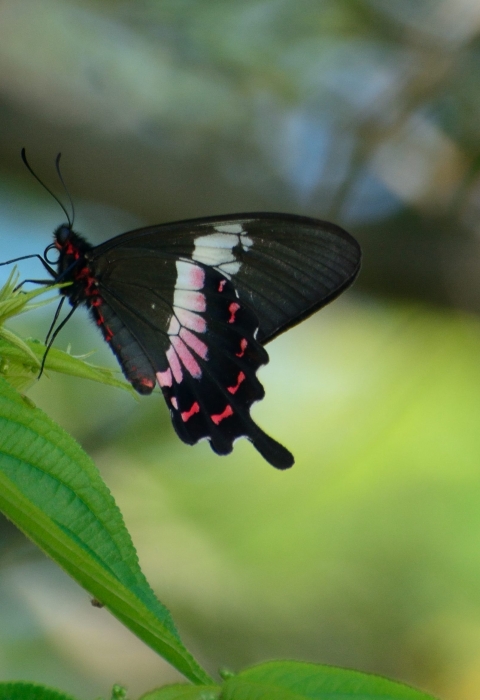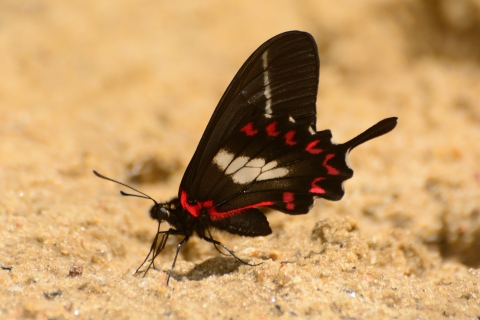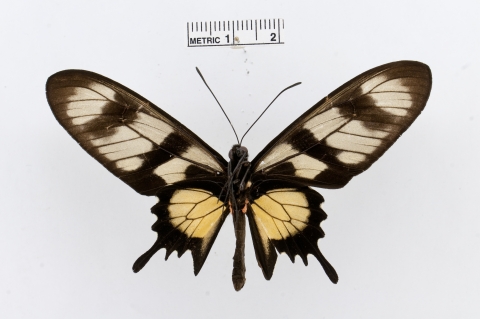Within Brazil’s diverse landscapes lie three rare jewels, rich in color, ecological significance, and a shared struggle for survival. Rose-colored scales highlight the luminosity of the Fluminense swallowtail, a large predominantly black and white swallowtail butterfly. The black Harris’ mimic swallowtail also sports beautiful white and rose-red markings. Hahnel’s Amazonian swallowtail is an impressive black and yellow butterfly with long, narrow forewings with three broad yellow-gray bands. These emphemeral creatures feature a kaleidoscope of color – and concern for their well-being.
That’s why the U.S. Fish and Wildlife Service is proposing to list the three as endangered species under the Endangered Species Act. The proposal follows a species status assessment of all three butterflies that relies on the best science, data and expertise to date.
Given the narrow distribution and habitat fragmentation of all three swallowtails, plus their reliance on specialized habitat, they are increasingly susceptible to climate change climate change
Climate change includes both global warming driven by human-induced emissions of greenhouse gases and the resulting large-scale shifts in weather patterns. Though there have been previous periods of climatic change, since the mid-20th century humans have had an unprecedented impact on Earth's climate system and caused change on a global scale.
Learn more about climate change because of their limited capacity to adapt. Fire is also a threat, causing fragmentation of their specialized habitats. In addition, rare butterflies and moths are highly prized by collectors, and all three swallowtails have been collected and sold internationally. Despite some protections under Brazilian and European laws, monitoring the trade of insects is difficult, and these existing regulations have minimal impact on regulating trade or collection.
Harm to the three species’ habitats is a key reason for the Service’s proposal. The Fluminense swallowtail is lives in sand forests or “restingas” and sparse habitat fragments across the swampy coastal forests of Rio de Janeiro state and the southern part of Espírito Santo state. Adult Fluminense swallowtails have been seen feeding on more than 30 flowering plant species of more than 12 families. The species’ coastal habitat is threatened by the draining of swamps, primarily for development.
The Harris’ mimic swallowtail lives in sand-forest habitats with mixed dense and open vegetation near and in lowland restinga swamps and in sandy flats above the tidal margins of the coastal Atlantic Forest. There are few known colonies of the subspecies, and the butterfly’s total population size is decreasing due to ongoing habitat loss and degradation.
Hahnel’s Amazonian swallowtail is very rare with a patchy distribution, living in stranded beaches in remote regions along the tributaries of the middle and lower Amazon River basin in the states of Amazonas and Pará. Due to its extremely low densities and occurrence in remote regions, there is very limited information on the ecology, population size, population trends, or sex ratio of Hahnel’s swallowtail.
All three of these Brazilian swallowtails need habitats that are the appropriate size and quality and that are connected. These habitats must have host plants for larval development and food, flowering plants for nectar, and suitable mates.
You can play a part in helping protect these beautiful Brazilian butterflies today by weighing in on the Service’s proposal. This link to the Federal Register provides more information and is the way to provide feedback.



